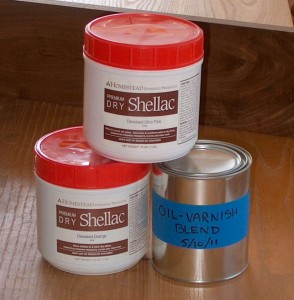Not infrequently I’m asked “why bother working with raw veneer.” For example, commercial walnut plywood is ready to use, while raw walnut veneer leaves have to be ordered, trimmed and edges jointed, taped into sheets, the sheets glued to a substrate, and the surfaces then sanded.
A conceptual bookcase project may help explain the difference. The bookcase will be in the middle of a long wall. It will have a lower section with doors, and a set-back upper section with open adjustable shelves. The doors of both examples will have panels faced with crotch figure. Plywood will be used for the sides and back of both the lower and upper sections, and the shelves. Solid wood will be used for the face frames and doors.
Using commercial walnut veneer, joints in the veneer likely will not be symmetric across the backs and sides. Almost certainly the grain pattern and figure will not be consistent across the inner and outer surfaces of the sides and the visible back of the upper section. The crotch veneer on the door panels may be gorgeous but too visual for the veneer on the hardwood plywood. A stain and glazing may be advised to make less noticeable the differences in grain pattern and figures on the various plywood surfaces. The lasting visual image may be the dark finish and not the wood. After ten to fifteen years the dark finish may be considered a dated look and plans inititated for yet another bookcase.
By starting with raw veneer, the width and length of the raw veneer are chosen for the bookcase dimensions, and the leaves trimmed so that joints between the leaves are balanced and symmetric across the sides and backs of the lower and upper sections. Bookmatched ropey quartersliced veneer could be used for the sides and backs to produce intriguing arrow or chevron patterns for added visual interest. Walnut burl accents could be incorporated in the corners of the lower and upper sections to further tie them together. And the crotch veneer door panels will look more part of a whole when matched with the bookmatched ropey walnut and burl accents. A clear finish over oil would be appropriate to highlight all the character and beauty of the walnut wood. The lasting visual impact of this bookcase would be the combination and use of figure and the wood itself. This bookcase would be likely to become a family treasure to be kept for decades and desired by the next generation.

